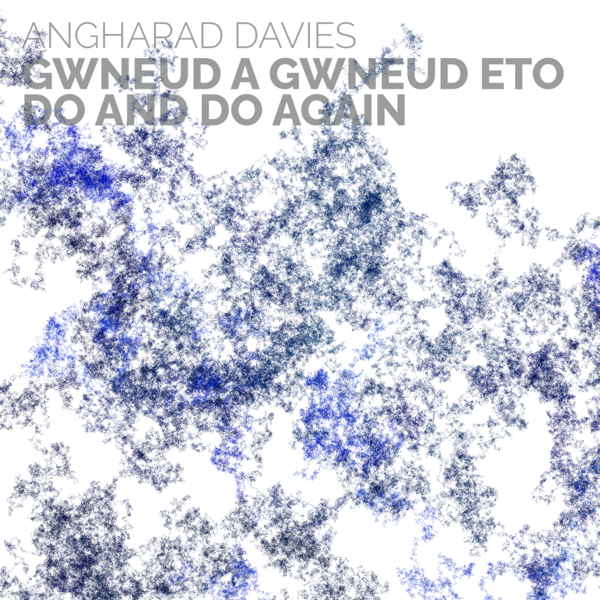
Angharad Davies
gwneud a gwneud eto / do and do again
Angharad Davies
atd14
In gwneud a gwneud eto / do and do again, Angharad Davies allows us to hear the violin almost from within, revealing the granular detail of what she describes as the instrument’s ‘endless wealth of possibilities’.
Critical acclaim
Veteran Welsh experimental violinist engages in an extreme pursuit, following a loose road map of extended techniques on a harrowing 52-minute trip. The microscopic gestures and electronic-like thrum are daunting, both for performer and listener. Davies listened to her first pass on headphones, filling in the gaps and supplementing flagging energy with a second layer of sound. It’s a truly psychedelic experience.
There are layers of hasty woody bow drill rubbing, wobbling harmonics, and the intermittent whistling and wheezing of strings sounding from a bowing gesture whose iterations contain noticeable variations but are similar enough to seem repetitive for the duration of the track. Its moving parts in incongruous cadences conveys a sense similar to being inside a vehicle breaking apart at high speed. And like shaking it simultaneously seems not moving and moving, repetitive and not repetitive.
Despite all we know about the violin and the once-new ways that people are playing it, Angharad Davies’ album gwneud a gwneud eto/do and do again transports us to another landscape altogether. We are strangers here and that is good. […] I am grateful that Davies pushed herself to the limit to reveal to us her world full of colour, hue and motion, as well as commitment, perseverance and discipline.
Tracks
| 1 | gwneud a gwneud eto / do and do again | 52:00 |
| TT | 52:00 |
Liner notes
Probably all musicians think of their instruments as in some way an extension of themselves, but to hold a violin seems particularly intimate. It rests nestled under the chin, embraced in the arms, and the sounds projected outwards for a listener are just a fraction of those heard up close by the player. In gwneud a gwneud eto / do and do again, Angharad Davies allows us to hear the violin almost from within, revealing the granular detail of what she describes as the instrument’s ‘endless wealth of possibilities’.
There is more at play, however, than an unadorned violin. The instrument was prepared, with a nail file woven in between the strings. Over the course of the performance Davies followed a predetermined series of actions: to play on the file, in front of it, behind it, on specific parts of it, varying speed, weight and the angle of the bow so that it catches open strings and other accidental notes. She explains, ‘I wanted to dare myself to play for this long just following one technique’, a rigour that perhaps reflects her many years’ experience playing music by (or with) Éliane Radigue, Tony Conrad and Cranc, her trio with Rhodri Davies and Nikos Veliotis.
What you hear is a layering of two performances. The first was captured in a single take by producer Newton Armstrong. For the second, Davies played whilst listening on headphones to what she had done before, lending energy where her stamina had previously flagged and feeling able to step back, with slight detachment, as the two tracks merged and allowed a third seemingly to make music of its own accord. ‘Do and do again’ is the principle by which this music comes into being.
Liveness and physicality are enhanced by the extended duration. The length of gwneud a gwneud eto for Davies allows ‘Also this honesty. No editing. It is what it is. That’s how it was’. This simple, unedited approach is complemented by the mix, which allows for cavernous spaces to be created as sounds are layered to surround and subsume the listener. The studio can be a sterile place, Davies acknowledges, but collaboration with Armstrong created a reciprocity between violinist and producer, ‘creating an agency’ between them.
New environments, new working methods, are born of necessity as much as invention. Davies spent much of 2020 exploring ways of making art without the violin. As a result, her musical creativity regained strength and vitality. This album is a chance to hear inside the violin and, more than that, inside the mind of a violinist re-engaging with her instrument. But this is not a lone venture; as Davies observes, now more than ever ‘we need to spend time together’ — making, remaking, listening, and listening again.
Laura Tunbridge